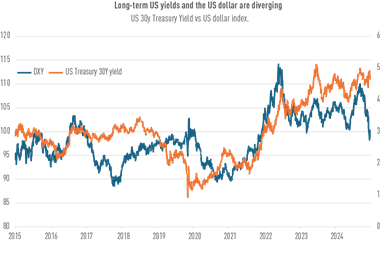IPA Q3 - The bond market vigilantes are back, aggressively bidding up yields across the curve (e.g., 10 year Treasury yields are up 110 bps over the last three months), and by doing so threatening the very economic recoveries their trades pre-suppose. Central bankers are often thankful when bond markets do the heavy lifting for them, but certainly not this time, as yields have risen too far and too fast.
A second major threat to the nascent and fragile recovery comes from crude, up 38% over the last three months and now trading well over $70. This is especially bad news for Asia, where the IMF estimates GDP growth declines by 0.8 ppts for every $10 increase in the price of oil.
Such dramatic moves are only justifiable if a robust recovery appears imminent. However, rather than a sudden return to normality, I anticipate a long, tough slog. A “reverse square root” growth trajectory seems more likely than a V or U, but even that cautious assessment may prove overly optimistic if vigilantes and speculators keep bidding up bond yields and oil prices.
I have considerable difficulty understanding their haste and conviction, and share Voltaire’s sentiment that while “Doubt is uncomfortable, certainty is ridiculous.” I am a not a perma-bear and do not deny the existence of green shoots, but just question how much confidence investors should take from a bit of “bad, but less bad” data.
To illustrate, of the 25 US data releases that we follow carefully, 11 can be categorized as “bad, but less bad” (e.g., ISM Manufacturing DI), 13 as “awful, and still awful” (e.g., IP) and one as “okay” (real disposable personal income growth is slightly above its five year mean). While this represents a vast improvement upon Q4 when, post-Lehman, pretty much all series were awful, it is nowhere near sufficient to declare a robust recovery is nigh.
Recent data is less bad than Q4 for three reasons. First, is the fading of the Lehman shock and markets taking out the “end of the world” trade. Worryingly, a similar trend emerged during the previous recession and it proved to be a head-fake. Post-9/11 equity markets rallied strongly into early ’02, but then declined dramatically, with a firm recovery not taking hold until 3/03.
Most worrisome is that in early 2002 the vast majority of indicators suggested a recovery was imminent even though, much like today, the root causes of the recession had not yet been eradicated. Series correctly indicating that activity would consequently remain weak in ’02 included bond spreads, house prices, unemployment claims, personal income and capital goods orders. Prudence dictates that these indicators receive careful scrutiny over the coming quarters.
The second reason for recent data appearing less bad is the aggressive monetary easing undertaken by central banks globally. While a huge positive, it is being partially undermined by the bond market vigilantes. To illustrate at a personal level, earlier this week I finished the two month refinancing process and was lucky enough to get a rate of 4.625%, saving over $500 a month. However, if I was to start the process now, the rate would be 75 - 100 bps higher, which explains why refinancing activity has collapsed. The Fed and other central banks are rightfully concerned about this adverse development and need to communicate their exit strategies much more clearly, assuring investors that policy will remain loose well into 2010.
Third, vigorous fiscal policy has been enacted in most economies. This has given a major boost to real disposable personal income (dpi) in Q1 and Q2. However, as tax season ends and various one-off programs fade, US real dpi is likely to be significantly negative in Q3. Luckily, two of the world’s foremost authorities on the Great Depression are in prominent US policymaking roles, making a repeat of the 1937 errors (when both monetary and fiscal policy were prematurely tightened) highly improbable.
What trades should investors consider in this environment? Regarding FX, the two key themes are the return of the carry trade (we especially like long KRW/JPY and AUD/CAD) and renewed US$ weakness (against a broad range of currencies). Commodities should do well over the medium-term, but several appear to have priced in the recovery too quickly (e.g., oil and copper). Zinc has lagged and looks attractive, but it likely makes sense to wait for a correction before increasing overall exposure to commodities (and commodity currencies).
Most government bond markets are oversold, both at short and long maturities, and yields are likely to come in somewhat over the very short-term. However, over the medium-term sovereign bonds are headed much higher so, aside from short-term trades, minimal exposure is warranted. On a more constructive note, value remains in several corporate debt sectors (although most no longer offer compelling spreads), as well as a few LATAM markets.
Finally, investors should remain moderately long equity beta. Developed market equities are fairly valued to slightly cheap, and are up only marginally ytd. A much stronger case can still be made for emerging market equities, including H-shares, Korea and Brazil. Investors have been anticipating a pullback for some time now, and any such move should be used as an opportunity to significantly increase positions.
My Aikido Sensei is fond of pointing out that “part of martial arts training is learning to be comfortable in uncomfortable situations.” Well, the last two years have certainly given investors a lot of practice in feeling uncomfortable. The good news is that we are now well on the road to recovery and markets should normalize over the next 9 to 12 months. The bad news is that the road will be anything but smooth, a fate almost assured by policy uncertainty, too high crude prices, and the trigger happy bond market vigilantes.














No comments yet